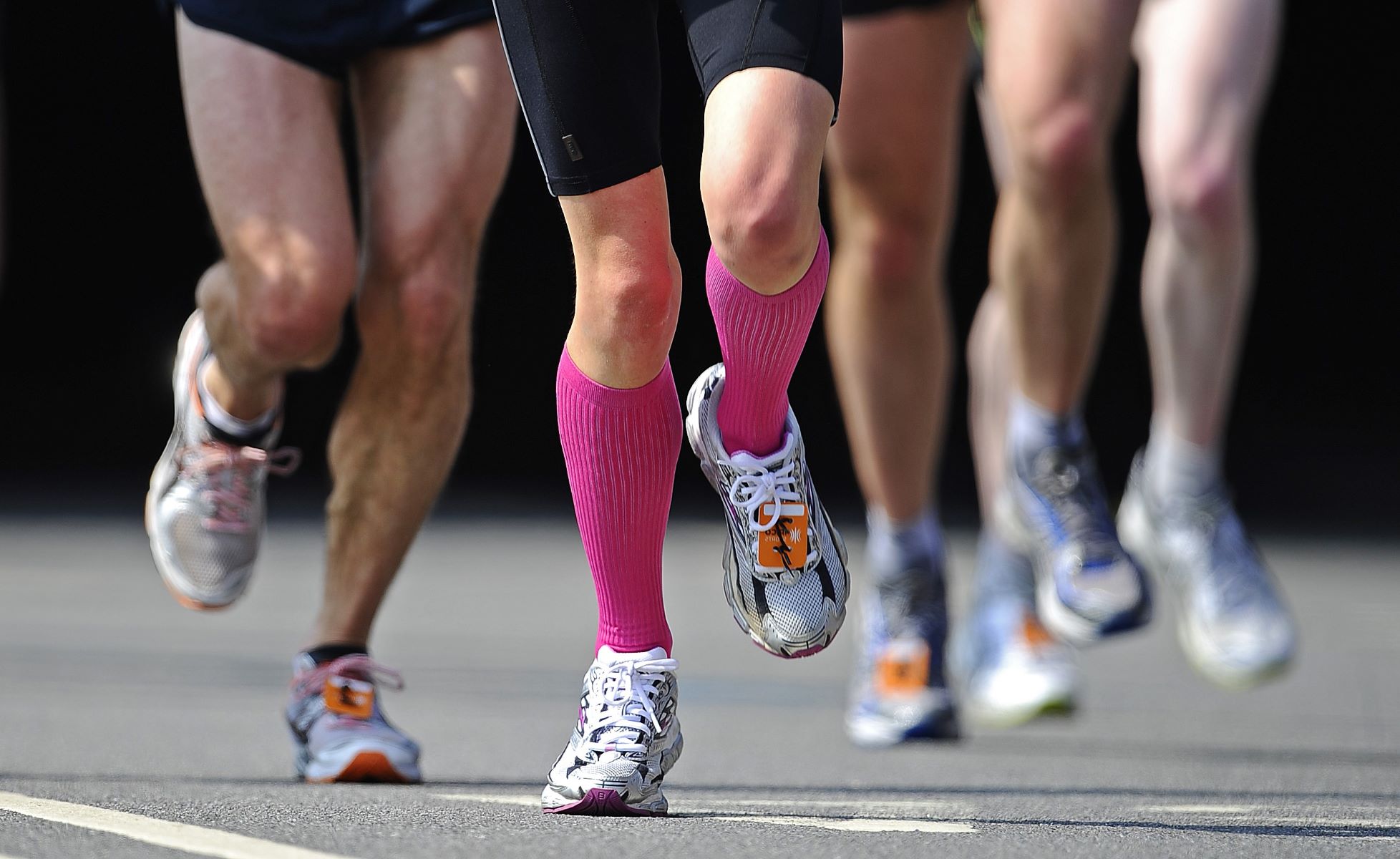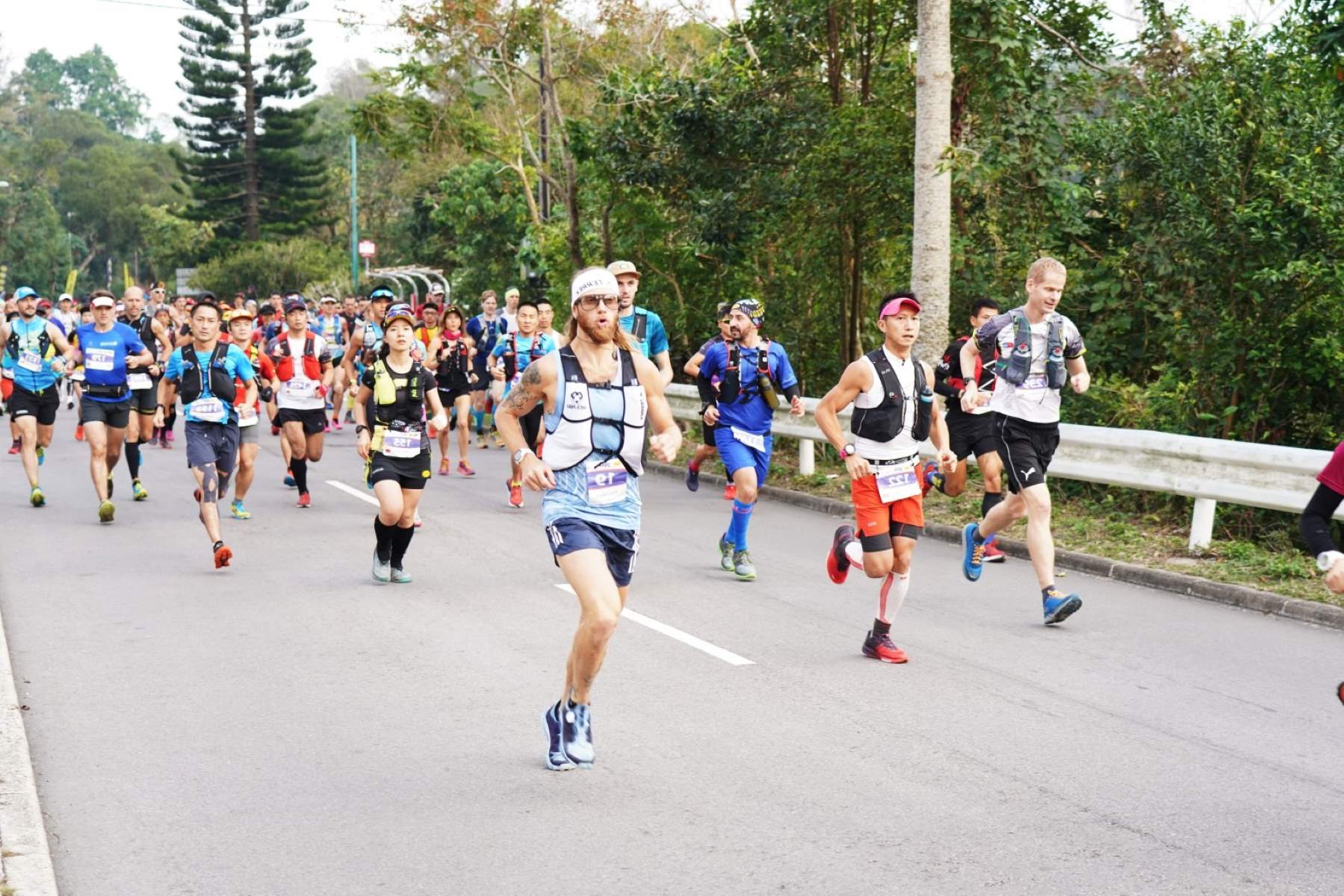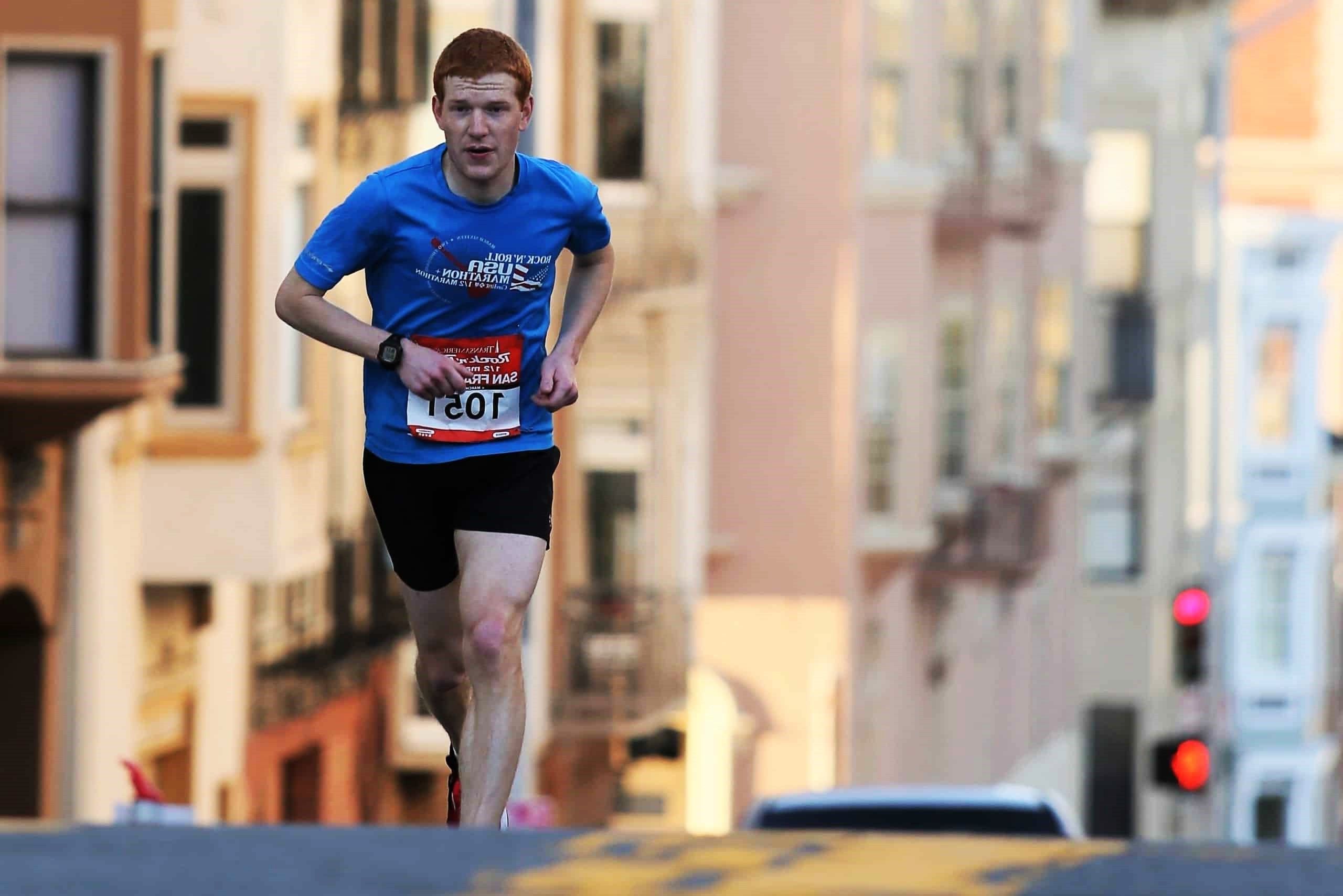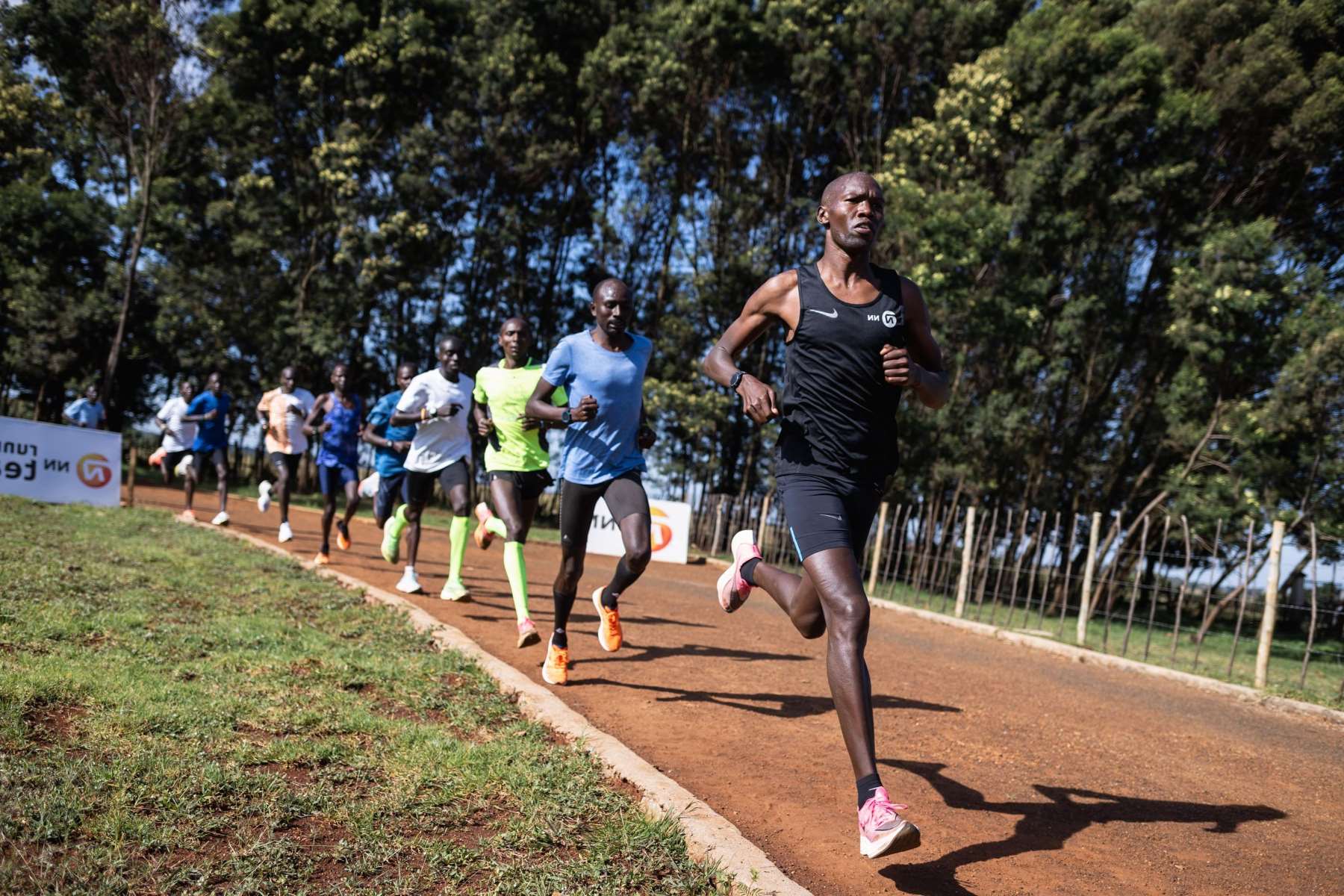Home>Training & Techniques>Training Plans>A Six-Week Beginner’s Training Plan For Running A 5K


Training Plans
A Six-Week Beginner’s Training Plan For Running A 5K
Published: March 4, 2024
Get started on your running journey with our six-week beginner's training plan designed to help you conquer your first 5K. Discover effective training plans and tips to reach your running goals. Start today!
(Many of the links in this article redirect to a specific reviewed product. Your purchase of these products through affiliate links helps to generate commission for Therunningadvisor.com, at no extra cost. Learn more)
Table of Contents
Introduction
Embarking on the journey of training for a 5K race is an exhilarating and rewarding endeavor. Whether you're a novice runner or someone looking to rekindle their passion for running, a well-structured training plan is essential for success. This six-week beginner's training plan is designed to guide you through a progressive and achievable program, tailored to build your endurance, improve your speed, and enhance your overall running technique.
The 5K distance, equivalent to 3.1 miles, serves as an ideal starting point for many individuals venturing into the realm of running. It strikes a balance between being challenging yet attainable, making it an excellent goal for beginners. By following this comprehensive training plan, you will not only prepare your body for the physical demands of the race but also cultivate the mental resilience needed to conquer the distance.
Throughout the next six weeks, you will gradually build your running foundation, enhance your cardiovascular endurance, and develop the strength necessary to tackle the 5K distance with confidence. Each week of the training plan is strategically crafted to introduce new elements while allowing ample time for recovery and adaptation. Additionally, the plan incorporates essential aspects such as speed work, strength training, and technique refinement to ensure a well-rounded approach to your preparation.
As you embark on this journey, it's important to approach the training plan with a positive mindset and a commitment to consistency. Embracing the process and celebrating the small victories along the way will be pivotal in your progression. Remember, every step you take during this training plan is a step closer to achieving your goal of completing a 5K race.
So, lace up your running shoes, embrace the excitement of the journey ahead, and let's dive into the first week of the training plan, where we will focus on building a solid foundation to kickstart your 5K training experience.
Read more: Improve Your 5K Speed With This Workout
Week 1: Building a Foundation
In the inaugural week of your 5K training journey, the primary focus is on establishing a solid foundation to support your progression throughout the program. This foundational phase is crucial as it sets the stage for the subsequent weeks of training, laying the groundwork for improved endurance and overall fitness.
Key Objectives:
-
Establishing Consistency: The first week centers on cultivating a habit of regular running. By committing to a consistent schedule, you begin to condition your body and mind for the upcoming challenges. Whether it's three to four days of running, interspersed with rest days, the goal is to ingrain the routine of lacing up your running shoes and hitting the pavement.
-
Building Endurance: While the initial runs may be relatively shorter in duration, the emphasis is on gradually increasing your running time. This incremental approach allows your body to adapt to the demands of running, building cardiovascular endurance and stamina.
-
Listening to Your Body: As you navigate through the initial week, it's essential to pay attention to your body's signals. This includes being mindful of any discomfort or fatigue, which may indicate the need for adjustments in pace or intensity. Additionally, incorporating proper warm-up and cool-down routines can aid in injury prevention and overall well-being.
Training Schedule:
-
Day 1: Begin with a brisk walk for 5 minutes, followed by a 15-minute run at a comfortable pace, and conclude with a 5-minute cool-down walk.
-
Day 2: Rest or engage in low-impact cross-training activities such as cycling or swimming to support recovery.
-
Day 3: Similar to Day 1, start with a 5-minute walk, then progress to a 20-minute run, and conclude with a 5-minute cool-down walk.
-
Day 4: Rest or opt for light cross-training activities to promote active recovery and prevent overexertion.
-
Day 5: On this day, aim for a 25-minute run at a conversational pace, allowing yourself to maintain a steady rhythm and focus on breathing comfortably.
-
Day 6 and 7: Allocate these days for complete rest or engage in gentle activities such as yoga or stretching to support muscle recovery and flexibility.
By the end of Week 1, you will have laid the groundwork for your 5K training journey, establishing a routine, and initiating the process of building endurance. This foundational phase sets the tone for the subsequent weeks, where the training intensifies to further enhance your capabilities and prepare you for the exhilarating challenge of completing a 5K race.
Week 2: Increasing Endurance
As you progress into the second week of your 5K training plan, the focus shifts towards amplifying your endurance capabilities, laying the groundwork for sustained performance and resilience. Building upon the foundation established in the previous week, Week 2 introduces incremental challenges aimed at enhancing your cardiovascular capacity and fortifying your running stamina.
Key Objectives:
-
Progressive Duration: Week 2 emphasizes a gradual increase in running duration, allowing your body to adapt to extended periods of continuous activity. By extending the duration of your runs, you stimulate physiological adaptations that contribute to improved endurance, such as enhanced oxygen utilization and increased efficiency of energy production.
-
Maintaining Consistency: Consistency remains a cornerstone of your training journey. By adhering to the prescribed schedule and committing to regular runs, you reinforce the habit of running while providing your body with the necessary stimuli for adaptation and growth.
-
Mindful Pacing: Developing an awareness of your pacing becomes pivotal during this phase. While gradually extending your running duration, it's essential to maintain a sustainable pace that allows you to cover the increased distance without compromising form or overexerting yourself. This mindful approach to pacing fosters efficient energy utilization and helps prevent premature fatigue.
Training Schedule:
-
Day 1: Initiate the week with a 5-minute brisk walk, followed by a 20-minute run at a comfortable pace, and conclude with a 5-minute cool-down walk. This extended duration run serves as a stepping stone towards bolstering your endurance capacity.
-
Day 2: Allocate this day for rest or engage in low-impact cross-training activities to support recovery and complement your running regimen.
-
Day 3: Similar to Day 1, commence with a 5-minute walk, progress to a 25-minute run, and conclude with a 5-minute cool-down walk. The incremental increase in running duration further stimulates physiological adaptations conducive to improved endurance.
-
Day 4: Embrace a day of rest or opt for light cross-training activities to facilitate active recovery and prepare your body for the upcoming training sessions.
-
Day 5: Aim for a 30-minute run at a conversational pace, allowing yourself to settle into a sustainable rhythm and focus on maintaining steady breathing throughout the extended duration.
-
Day 6 and 7: Designate these days for complete rest or engage in gentle activities such as yoga or stretching to support muscle recovery and promote overall flexibility.
By the culmination of Week 2, you will have made significant strides in bolstering your endurance capabilities, setting the stage for further progression in the subsequent weeks of the training plan. The deliberate focus on incremental duration increases and mindful pacing serves as a catalyst for the development of the sustained stamina essential for conquering the 5K distance.
Week 3: Adding Speed Work
In the third week of the 5K training plan, the introduction of speed work marks a pivotal phase in your preparation for the upcoming race. While endurance forms the cornerstone of your training, integrating speed-focused sessions during Week 3 serves to enhance your running efficiency, boost cardiovascular capacity, and cultivate the ability to sustain faster paces. This deliberate emphasis on speed work not only contributes to overall performance improvement but also adds a dynamic element to your training regimen, fostering a well-rounded approach to 5K readiness.
Key Objectives:
-
Speed Development: Week 3 prioritizes the incorporation of structured speed workouts, such as interval training or tempo runs, designed to elevate your running speed and anaerobic threshold. These targeted sessions aim to challenge your body to adapt to higher intensities, thereby enhancing your ability to maintain faster paces during the race.
-
Enhanced Running Economy: By engaging in speed-focused training, you work towards refining your running mechanics and optimizing your stride efficiency. This focus on running economy contributes to reduced energy expenditure at faster speeds, allowing you to cover ground more effectively while conserving vital energy reserves.
-
Mental Resilience: Speed work introduces mental fortitude as a crucial component of your training. Pushing your limits during faster intervals cultivates mental resilience, enabling you to confront discomfort and sustain higher intensities, a valuable asset during the latter stages of the 5K race.
Training Schedule:
-
Day 1: Initiate the week with a dynamic interval session. After a 10-minute warm-up jog, perform 6 x 400-meter intervals at a challenging pace, with 2-minute recovery periods between each interval. Conclude with a 10-minute cool-down jog.
-
Day 2: Allocate this day for active recovery, engaging in low-impact activities such as swimming or cycling to support muscle recuperation and prepare for the upcoming training sessions.
-
Day 3: Incorporate a tempo run into your training. Begin with a 10-minute warm-up, followed by a sustained 15-minute run at a comfortably hard pace, and conclude with a 10-minute cool-down jog.
-
Day 4: Embrace a day of rest or opt for light cross-training activities to facilitate recovery and complement your running routine.
-
Day 5: Engage in a Fartlek session, alternating between periods of fast running and recovery. After a 10-minute warm-up, perform 8 x 1-minute bursts of increased speed, interspersed with 2-minute easy-paced segments. Conclude with a 10-minute cool-down jog.
-
Day 6 and 7: Designate these days for complete rest or engage in gentle activities such as yoga or stretching to support muscle recovery and flexibility.
By the culmination of Week 3, the integration of speed work into your training plan will have contributed to notable enhancements in your running capabilities. The deliberate focus on speed development, enhanced running economy, and mental resilience sets the stage for further progression, laying a robust foundation for your 5K race readiness.
Week 4: Incorporating Strength Training
In the fourth week of the 5K training plan, the integration of strength training takes center stage, adding a pivotal dimension to your preparation for the upcoming race. While running forms the core of your training regimen, incorporating targeted strength exercises during Week 4 serves to fortify your musculoskeletal system, enhance running economy, and mitigate the risk of injury. This deliberate emphasis on strength training not only contributes to overall physical resilience but also augments your running performance, fostering a holistic approach to 5K readiness.
Key Objectives:
-
Muscular Resilience: The inclusion of strength training aims to bolster the resilience of key muscle groups involved in running, such as the quadriceps, hamstrings, calves, and core musculature. By targeting these muscle groups through specific exercises, you fortify their capacity to withstand the repetitive impact of running, reducing the likelihood of fatigue-related form deterioration.
-
Improved Running Economy: Strength training plays a pivotal role in enhancing running economy, contributing to more efficient movement patterns and reduced energy expenditure. By strengthening the muscles involved in propulsion and stabilization, you optimize your stride mechanics, allowing for greater power generation and enhanced overall efficiency during running.
-
Injury Prevention: Week 4's focus on strength training serves as a proactive measure to mitigate the risk of common running-related injuries. By addressing muscular imbalances and enhancing overall muscular strength, you create a more robust foundation, reducing the susceptibility to overuse injuries and promoting long-term running sustainability.
Training Schedule:
-
Day 1: Initiate the week with a comprehensive strength training session, focusing on exercises targeting the major muscle groups involved in running. Incorporate exercises such as squats, lunges, calf raises, and core-strengthening planks to fortify your lower body and core musculature.
-
Day 2: Allocate this day for active recovery, engaging in low-impact activities such as swimming or cycling to support muscle recuperation and prepare for the upcoming training sessions.
-
Day 3: Integrate a shorter strength training session, emphasizing exercises that promote muscular endurance and stability. Include exercises such as bodyweight squats, step-ups, and resistance band exercises to maintain muscle engagement without inducing excessive fatigue.
-
Day 4: Embrace a day of rest or opt for light cross-training activities to facilitate recovery and complement your running routine.
-
Day 5: Engage in a focused strength training session, incorporating exercises that target specific areas of muscular weakness or imbalance. By addressing individualized strength needs, you work towards creating a more symmetrical and resilient musculoskeletal framework.
-
Day 6 and 7: Designate these days for complete rest or engage in gentle activities such as yoga or stretching to support muscle recovery and promote overall flexibility.
By the culmination of Week 4, the integration of strength training into your 5K training plan will have contributed to significant enhancements in muscular resilience, running economy, and injury prevention. The deliberate focus on targeted strength exercises serves as a catalyst for overall physical robustness, complementing your running endeavors and fortifying your readiness for the upcoming 5K race.
Week 5: Fine-Tuning Technique
As you enter the penultimate week of the 5K training plan, the focus shifts towards the refinement of running technique, marking a pivotal phase in your preparation for the upcoming race. While endurance, speed, and strength have formed the pillars of your training journey, Week 5 introduces a deliberate emphasis on honing your running mechanics, optimizing stride efficiency, and cultivating a fluid and sustainable running form. This meticulous attention to technique not only contributes to improved performance but also plays a crucial role in injury prevention and long-term running sustainability.
Key Objectives:
-
Running Form Optimization: Week 5 prioritizes the refinement of running form, encompassing elements such as posture, arm swing, cadence, and foot strike. By focusing on these fundamental aspects, you aim to cultivate a more efficient and sustainable running gait, minimizing energy wastage and reducing the risk of overuse injuries.
-
Cadence and Stride Length: The week emphasizes the exploration of optimal cadence and stride length, aiming to find a balance that promotes both speed and efficiency. By experimenting with different cadences and stride lengths during training runs, you work towards identifying the most effective combination that suits your individual biomechanics and running style.
-
Mental Focus and Relaxation: Fine-tuning technique involves cultivating a heightened sense of body awareness and mental focus during running. By maintaining a relaxed yet engaged demeanor, you aim to optimize muscle engagement and movement efficiency, fostering a smooth and controlled running experience.
Training Schedule:
-
Day 1: Initiate the week with a focus on running drills and form exercises. Incorporate drills such as high knees, butt kicks, and strides to promote neuromuscular coordination and reinforce proper running mechanics.
-
Day 2: Allocate this day for a technique-focused run. During this session, concentrate on maintaining a consistent and relaxed running form, paying attention to elements such as posture, arm swing, and foot placement.
-
Day 3: Integrate a tempo run with a specific emphasis on cadence and stride length. Experiment with varying cadences and stride lengths to identify combinations that feel most natural and efficient for your running style.
-
Day 4: Embrace a day of rest or opt for light cross-training activities to facilitate recovery and complement your running routine.
-
Day 5: Engage in a form-focused long run, where the primary objective is to sustain proper running mechanics and form throughout an extended duration. Focus on maintaining relaxation and efficiency, especially as fatigue sets in.
-
Day 6 and 7: Designate these days for complete rest or engage in gentle activities such as yoga or stretching to support muscle recovery and promote overall flexibility.
By the culmination of Week 5, the dedicated focus on fine-tuning running technique will have contributed to notable enhancements in running form, efficiency, and mental acuity. The deliberate attention to refining technique serves as a catalyst for improved performance, injury prevention, and the cultivation of a sustainable and enjoyable running experience.
Week 6: Tapering and Race Preparation
In the culminating week of the 5K training plan, the focus shifts towards tapering and meticulous race preparation, marking a pivotal phase in your journey towards the upcoming race. Tapering, a strategic reduction in training volume and intensity, serves as a fundamental component of race readiness, allowing your body to recover, adapt, and peak for optimal performance on race day. This deliberate tapering period not only facilitates physical rejuvenation but also cultivates mental preparedness, ensuring that you approach the race with confidence and vitality.
Key Objectives:
-
Physical Recovery: Tapering involves a gradual reduction in training mileage and intensity, allowing accumulated fatigue to dissipate while preserving fitness gains. This period of recovery is essential for muscle repair, glycogen replenishment, and overall restoration of physiological resources, ensuring that you arrive at the race start line feeling fresh and revitalized.
-
Mental Rejuvenation: The tapering phase provides an opportunity for mental rejuvenation, allowing you to alleviate pre-race anxiety, refocus your mindset, and cultivate a sense of anticipation and excitement for the upcoming race. By embracing the taper as a period of mental preparation, you set the stage for a positive and resilient race-day experience.
-
Race Logistics and Strategy: Week 6 is dedicated to meticulous race preparation, encompassing elements such as race logistics, course familiarization, and strategic planning. By familiarizing yourself with the race venue, course terrain, and logistical details, you enhance your confidence and preparedness, ensuring a seamless and focused race-day experience.
Tapering Schedule:
-
Day 1: Initiate the tapering phase with a significantly reduced running session, focusing on maintaining fluid and relaxed running form while covering a fraction of your typical training distance.
-
Day 2: Embrace a day of active recovery, engaging in low-impact activities such as walking or gentle yoga to promote circulation, flexibility, and mental relaxation.
-
Day 3: Incorporate a short, easy-paced run to maintain a sense of rhythm and engagement while allowing for ample recovery and rejuvenation.
-
Day 4: Embrace complete rest or opt for light cross-training activities to support muscle recovery and mental rejuvenation.
-
Day 5: Engage in a brief and relaxed run, incorporating strides to maintain neuromuscular engagement and mental sharpness while minimizing physical exertion.
-
Day 6: Allocate this day for complete rest, focusing on mental preparedness, visualization, and positive affirmation in anticipation of the upcoming race.
-
Day 7: Embrace complete rest, prioritizing mental relaxation, hydration, and adequate sleep to ensure optimal readiness for race day.
By the culmination of Week 6, the tapering phase and meticulous race preparation will have positioned you for a peak performance on race day. The deliberate focus on physical recovery, mental rejuvenation, and strategic race readiness sets the stage for an exhilarating and successful 5K race experience.
Conclusion
As you reach the conclusion of this six-week beginner's training plan for running a 5K, it's essential to reflect on the remarkable journey you've undertaken. Throughout the meticulously structured program, you've progressed from building a solid running foundation to fine-tuning your technique and preparing for the exhilarating challenge of a 5K race. The culmination of this training plan marks not only a physical transformation but also a testament to your dedication, perseverance, and unwavering commitment to personal growth.
During the initial weeks, you laid the groundwork for your 5K training journey by establishing a consistent running routine, gradually building endurance, and integrating speed work and strength training. These foundational elements were pivotal in fortifying your physical capabilities and mental resilience, preparing you for the dynamic challenges of the subsequent weeks.
As the training plan progressed, you delved into the nuances of running mechanics, honing your technique, and embracing the tapering phase to ensure peak readiness for the upcoming race. The deliberate focus on form refinement, speed development, and strategic race preparation has not only enhanced your physical prowess but also instilled a profound sense of confidence and preparedness as you approach the culmination of this transformative journey.
Beyond the physical and technical aspects, this training plan has been a testament to your unwavering determination and the remarkable capacity for growth and adaptation. Each stride taken, each interval conquered, and each moment of perseverance has contributed to your evolution as a runner and as an individual committed to embracing challenges and surpassing limitations.
As you stand on the brink of the 5K race, it's important to carry forward the invaluable lessons and experiences garnered throughout this training plan. The discipline, resilience, and passion that have fueled your journey are not confined to the training regimen but extend into every facet of your life. The dedication and fortitude you've exhibited serve as a testament to the boundless potential within you, transcending the realm of running and permeating into the fabric of your aspirations and endeavors.
As you embrace the excitement and anticipation of the upcoming race, remember that the finish line represents not only the culmination of a 5K distance but also a celebration of your growth, determination, and unwavering spirit. Whether you stride across the finish line or revel in the joy of participation, know that every step taken during this training plan has been a testament to your courage and resilience.
So, as you embark on the race day, carry with you the indomitable spirit that has propelled you through this transformative journey. Embrace the thrill of the race, savor every stride, and revel in the realization that you are not merely a participant in a 5K race but a testament to the extraordinary capabilities that reside within you. This is not just a conclusion but a prelude to the remarkable chapters that await, fueled by the unwavering determination and resilience that define your journey as a runner and as an individual committed to embracing challenges and surpassing limitations.












